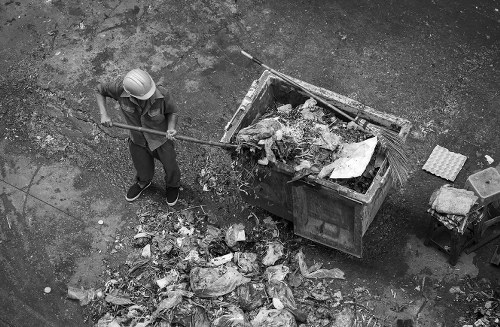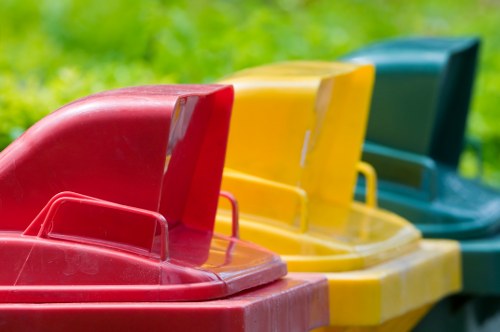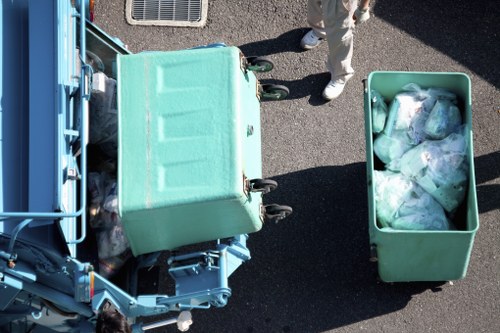Skip Permits in Barbican: Everything You Need to Know
What are Skip Permits?

Skip permits are essential authorizations required by local authorities before placing a skip on public or private land. In Barbican, these permits regulate the placement and usage of skips to ensure safety and compliance with local regulations.
Obtaining a skip permit involves submitting an application detailing the size, location, and duration of the skip placement. This process helps manage waste disposal effectively while minimizing potential disruptions to the community.
Without a valid permit, individuals and businesses risk facing fines or having their skips removed by authorities. Therefore, understanding the requirements and procedures for skip permits in Barbican is crucial for smooth and lawful waste management.
Why You Need a Skip Permit in Barbican

Barbican, being a bustling area with strict regulations, mandates skip permits to maintain order and cleanliness. Whether you're renovating your home, managing construction waste, or undertaking a large clean-up project, a skip permit ensures that your waste disposal activities adhere to local laws.
Having a skip permit also ensures that the placement of the skip does not obstruct public pathways, roads, or interfere with local businesses and residents. It promotes responsible waste management, contributing to the overall aesthetics and hygiene of the Barbican area.
Additionally, possessing the appropriate skip permit can streamline your project timelines by preventing legal complications and delays caused by non-compliance. It offers peace of mind, knowing that your waste disposal needs are met legally and efficiently.
How to Obtain a Skip Permit in Barbican

Applying for a Permit
The first step in obtaining a skip permit in Barbican is to identify the appropriate local authority responsible for issuing these permits. Typically, this would be the Barbican City Council or a designated waste management department.
Once you've identified the authority, you can begin the application process. This usually involves filling out an application form either online or in person. Provide accurate information about the skip size, intended location, and the duration for which you plan to keep the skip.
Ensure that you submit the application well in advance of your planned skip placement date to account for any processing time or potential follow-up questions from the authorities.
Necessary Documentation
When applying for a skip permit, certain documents are typically required to accompany your application. These may include:
- Proof of ownership or authorization to place a skip on the selected property.
- A detailed site plan showing the exact location of the skip.
- Information about the type of waste you intend to dispose of.
- Identification documents, such as a driver's license or passport.
Having all necessary documentation ready can expedite the approval process and reduce the likelihood of your application being delayed or rejected.
Regulations and Guidelines

Size and Weight Restrictions
Barbican imposes specific size and weight restrictions on skips to prevent overloading and ensure they fit within designated spaces without causing structural strain. Common skip sizes range from 2 cubic yards for small tasks to 12 cubic yards for larger projects.
Each skip size comes with its own weight limit, and exceeding this can result in additional fines or the need for extra permits. It's essential to accurately estimate the volume and weight of your waste to select the appropriate skip size.
Consulting with waste management professionals can help determine the best skip size for your project, ensuring compliance with Barbican's regulations and efficient waste disposal.
Placement Rules
When placing a skip in Barbican, there are specific guidelines to follow to avoid obstruction and ensure safety. Skips should be placed on stable ground, away from driveways, sidewalks, and utility lines to prevent accidents and disruptions.
Moreover, certain areas within Barbican may have restrictions on skip placement, such as historical sites or densely populated residential zones. Always verify with local authorities to identify permissible areas for skip placement.
Adhering to these placement rules not only ensures compliance but also fosters good relations with neighbors and the community by maintaining public order and accessibility.
Cost of Skip Permits in Barbican

The cost of obtaining a skip permit in Barbican can vary based on several factors, including the size of the skip, duration of placement, and the specific area within Barbican where the skip will be placed.
Typically, fees are structured per day or per week, with discounts available for longer-term placements. Additionally, there may be separate charges for applications involving larger skips or placements in restricted areas.
It's advisable to consult with local authorities or waste management companies to get a detailed breakdown of the costs involved. Budgeting appropriately ensures that your project remains financially viable while adhering to necessary regulations.
Benefits of Having a Skip Permit
Securing a skip permit in Barbican offers numerous benefits beyond mere compliance. It streamlines your waste disposal process, providing a designated space for debris without hassle.
With a permit, you gain access to regulated waste collection services, ensuring that your waste is handled responsibly and recycled appropriately. This contributes to environmental sustainability and reduces the overall carbon footprint of your project.
Moreover, having a permit can enhance the efficiency of your project by minimizing disruptions. It allows you to plan better and allocate resources effectively, ensuring timely completion of your tasks without unforeseen legal obstacles.
Common Mistakes to Avoid
When dealing with skip permits in Barbican, certain common mistakes can lead to complications or additional costs. Avoid placing the skip without a valid permit, as this can result in fines and the need for removal.
Another common error is underestimating the size or weight of the waste, leading to the selection of an inappropriate skip size. This can cause overflows, require additional permits, or necessitate multiple skips, increasing overall costs.
Additionally, neglecting to follow placement guidelines can result in obstructed pathways or safety hazards. Always ensure that the skip is placed in an approved location, adhering to all local regulations to avoid unnecessary issues.
FAQs About Skip Permits in Barbican

How long does it take to obtain a skip permit?
The processing time for a skip permit in Barbican can vary, but typically, applications are reviewed within a few business days. It's recommended to apply well in advance to account for any potential delays.
Can I place a skip on my private property without a permit?
While placing a skip on private property may not always require a permit, it's essential to consult with local authorities to ensure compliance with all regulations and avoid potential conflicts.
What types of waste are prohibited in skips?
Certain hazardous materials, such as asbestos, chemicals, and medical waste, are prohibited from being disposed of in skips. Always check with waste management services for acceptable waste types.
Contact us today to secure your skip permit in Barbican and ensure a smooth and compliant waste disposal process.